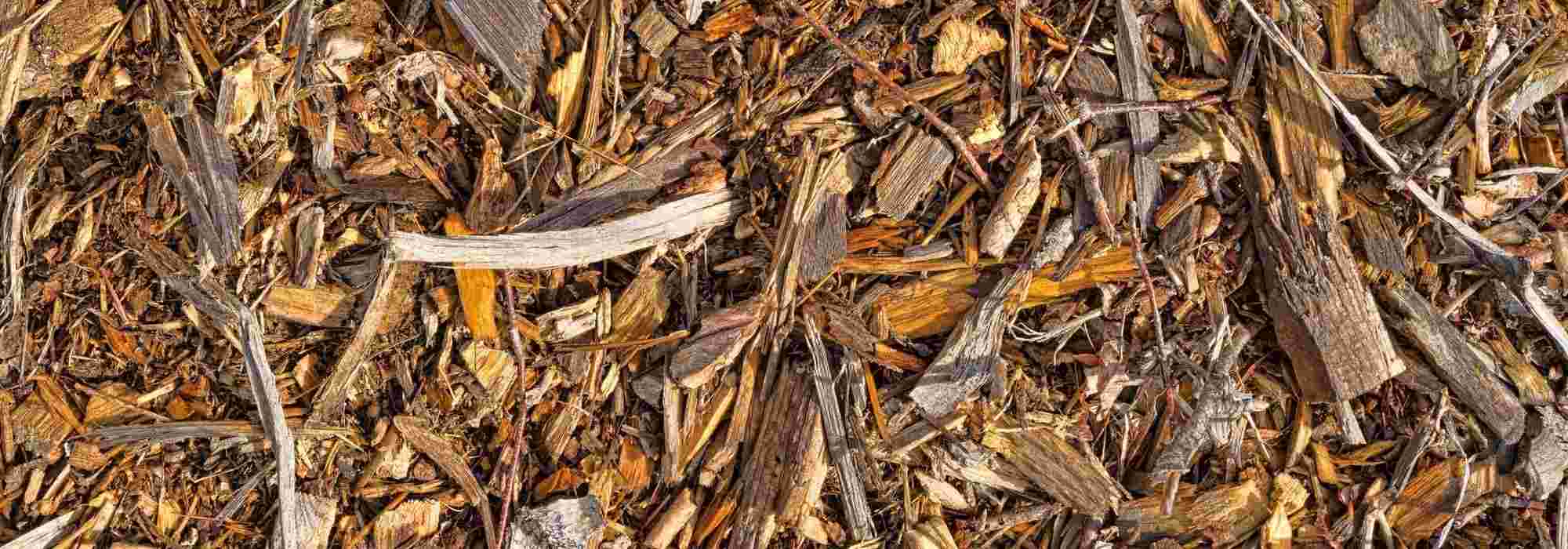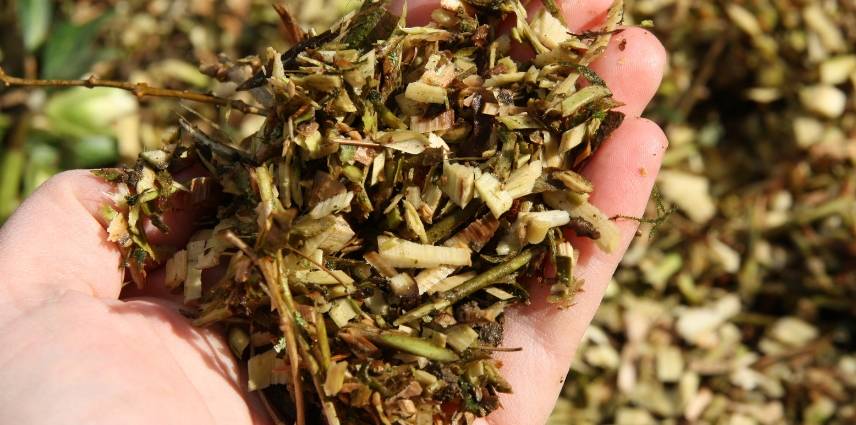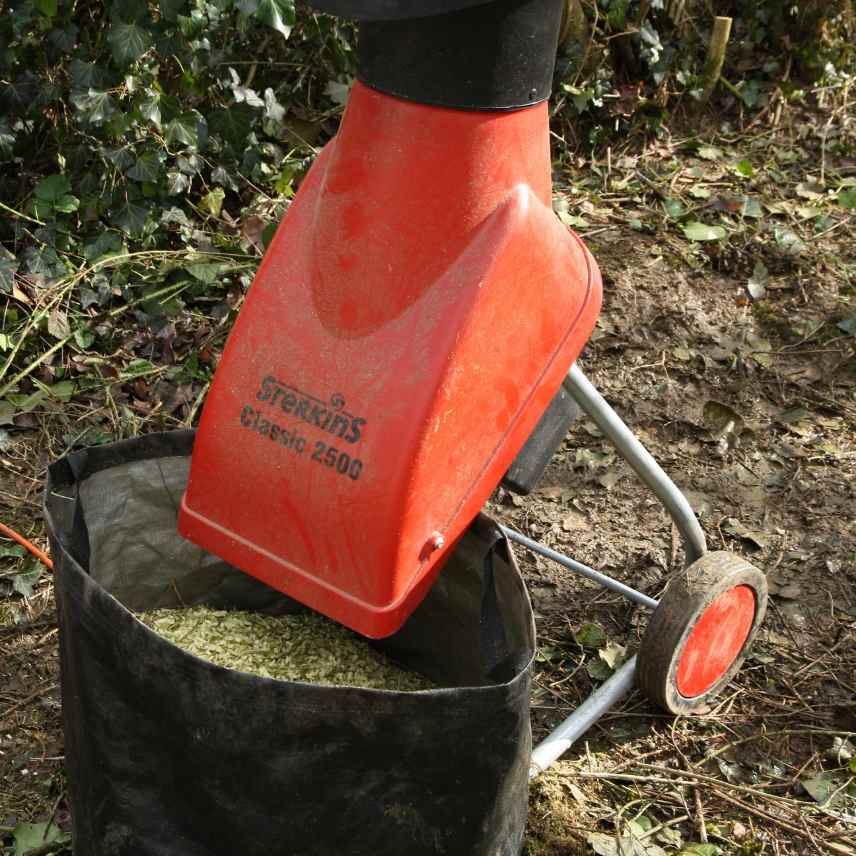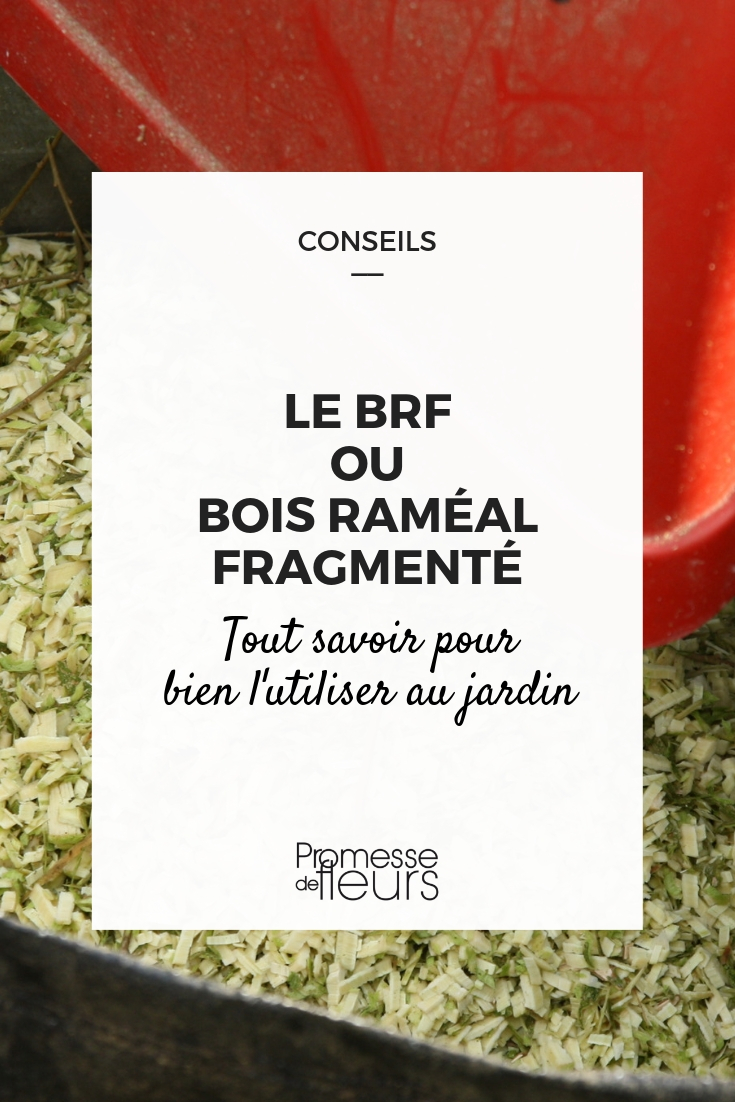
BRF or ramial chipped wood: what is it? How to use it in the garden?
Our advice
Contents
BRF or ramial chipped wood is an ecological, economical and aesthetic material that is all the rage in organic gardens and permaculture. It is a mulch made from young twigs of trees and bushes that greatly helps poor, poorly structured soils. It will give a major boost to soil fauna and soil flora, which will quickly transform them into a fine forest humus.
BRF will therefore help you obtain healthy plants while reducing water and fertiliser inputs and saving you a lot of work in the garden, particularly when weeding. But how to produce and use it? Does BRF really have only advantages?
What is BRF?
- Definition
This curious acronym was coined by Canadian researchers and simply means : Ramial Chipped Wood. This RCW is in fact an uncomposted chipped material most often derived from twigs of trees and leafy bushes.
- Why twigs?
Twigs contain amino acids, proteins, minerals, cellulose and… lignin like any lignified plant element (wood). But in young twigs, this lignin is little polymerised which facilitates subsequent breakdown. Moreover, lignin is essential in the garden as in crops because it favours fungi that actively participate in decomposition and mineralisation of plant material.
Add to that twigs are also much richer in mineral elements than old branches, notably in nitrogen, phosphorus and potassium : the famous N-P-K that usually characterise synthetic or natural fertilisers.
- Why fragments?
Tree and bush branches are naturally protected against attack by micro-organisms by means of resin and wax. That’s why it is important to avoid wounding a tree with careless pruning. If twigs are fragmented, that protection is nullified and it creates entry points, especially for fungi.
Oli’s quick note: mineralisation is the process induced by soil microflora (bacteria, yeasts, fungi and algae) that breaks down organic matter into mineral elements assimilable by plants.

RCW just out of the shredder
Read also
Mulching: Why? how?How to use BRF as mulch?
BRF is used as mulch in borders, in vegetable gardens, at the base of new plantings, and sometimes even on paths. The idea is to recreate a kind of rich, aerated and, above all, living forest soil.
You can use BRF to mulch:
- the bases of trees, bushes and your hedge,
- soil of your borders and flowerbeds,
- soil of your vegetable garden,
- the surface of pots and planters,
- and create paths that are both attractive and practical…
Ideally, lay a 3 to 5 cm layer of BRF on soil… and wait! It will break down slowly but surely to enrich and increase biological activity in soil. Bear in mind, however, that plants need to breathe. Do not cover collars of trees, bushes or plants with BRF.
You can also incorporate BRF directly into soil but only superficially, to a depth of less than 10 cm because BRF’s breakdown process needs air. Also watch out for ‘nitrogen drawdown’ (see: disadvantages of BRF).

BRF is used as mulch. It protects and revitalises soil.
Benefits of Ramial Chipped Wood (RCW)
It is often described as a genuine revolution in the garden and in crops. Without going that far, it must be admitted that the results are quite spectacular, especially in regions where the soil is particularly poor and dry.
Here are BRF’s various benefits!
- BRF stimulates soil life
People often talk about degradation of cultivated soils. By using BRF, the process is reversed and one can speak of soil agradation. When BRF is applied on the surface, it induces intense activity among micro-organisms. As you know, everything is linked in nature, on the surface as in the soil. If micro-organisms are healthy, all other elements (insects, springtails, worms, mites, …) of the trophic chains will also be healthy and will do excellent work in the soil.
- It increases soil humus content
All this pedofauna and flora will work to break down organic matter and thus contribute to increasing humus content. Humus in nature is the top layer of soil created by this degradation of organic matter. This humus layer retains water well and is rich in mineral elements directly assimilable by plants.
- It improves soil structure
BRF lightens heavy soils. Indeed, earthworms and springtails can do their work of mixing soil layers more effectively and will loosen compacted heavy soils. BRF brings organic matter to light soil, which will also improve its structure.
- It balances water retention: less watering
Soil remains very moist under BRF mulch even during the driest periods. But BRF, by creating humus, also helps prevent excess water. Humus then acts like a sponge that will hold water and make it available only during dry periods. Mulches also help reduce water evaporation.
- It improves plant health in the garden and boosts yield in the vegetable garden
BRF is not a fertiliser. But by making all nutrients and mineral elements plants need assimilable, they will consequently be healthier and grow better.
- BRF regulates and helps stabilise pH
pH will eventually stabilise more or less towards neutrality, that is, neither too acidic nor, above all, too alkaline. Obviously, if you take care not to include resinous material in the woodchip.
→ read: “what is soil pH?”
- It prevents soil compaction
A good 5 cm layer protects soil physically from possible compaction by gardeners’ heavy feet.
- It reduces proliferation of unwanted plants
All mulching helps control growth of weeds. This reduces potential competition between plants (subject to debate!) but, above all, reduces weeding work in the garden.
- It provides a very attractive appearance
A BRF mulch is much more attractive in the garden than simply leaving the soil naked.
Disadvantages and limitations of BRF
As always, there are disadvantages and limits to using ramial chipped wood in the garden… Here are the main ones :
- You need to find RCW or produce it yourself
It’s a fact! To use RCW, you must either produce it yourself or find a supplier. And that’s not as easy as it sounds. To produce it yourself you absolutely need an expensive and potentially dangerous machine (well, as with anything, just take care…). Besides, you must already have a lot of pruning waste to make a substantial volume of RCW. The second option is to source it through various channels (see below), but it’s costly to buy, sometimes difficult to transport and… you have to find that channel.
- Be careful on heavy, clay soils!
If RCW is applied in autumn, soil is wet and that moisture will be trapped, making soil even more impermeable. If incorporated in spring, the small fragments will be surrounded by a sort of protective coating, which will slow their breakdown. In addition, clay soils take longer to warm up in spring and a mulch worsens the situation. Best is to sow a green manure in autumn to protect and loosen soil, then spread a thin layer of RCW (about 1 cm) in mid-spring when soil is warm enough. Repeat these operations for two or three years until soil structure improves.
→ to read, for everything about green manures : “Green manures: why, how?”
- RCW, beware of nitrogen deficiency
There is little risk of causing “nitrogen deficiency” by applying a simple layer of RCW, even a thick one on soil. But this can happen if you try to incorporate it into the topsoil to accelerate effects on soil structure. Indeed, during RCW decomposition to produce humus, microorganisms need nitrogen which, in that case, will no longer be available to plants, which will then suffer nitrogen deficiency. Adding manure or correcting with a nitrogen fertiliser can fix the problem while balance is re-established.
→ to read on the subject : “Nitrogen deficiency: what is it? How to avoid and remedy it?”
- Problem with gastropods
Obviously, slugs and snails will love this warm, moist protection. And that can be a significant issue, especially in the vegetable garden. Note, however, that these agreeable little creatures play a considerable ecological role in recycling plant material and as food for other animals. Keep that in mind!
→ our advice : “Slugs: 7 ways to fight effectively and naturally”
- Wood mice and some other pests like RCW
Wood mice like to burrow in it and wild boar are sometimes attracted by fungi that live in RCW, with, of course, the inconveniences that entails. But this is more anecdotal in our private gardens.
→ to read : “How to protect against wood mice”
- No more spontaneous seedlings!
If you enjoy your favourite wildflowers popping up in your beds, that will be difficult for them with a thick layer of RCW, as with any mulch.
How to make BRF? Where to buy BRF?
How to produce your BRF
Here’s how to produce your own BRF :
- Prune your trees, bushes or fruit trees during dormancy, that is between November and early March.
- All essential oils of leafy deciduous species can be used but favour native species (Oak, Ash, Maple, …) because microorganisms and fungi likely to break down your BRF will be more effective. You can add some evergreens, even some resinous, up to a maximum of 20%. These decompose less well than deciduous trees and, in the case of resinous trees, will increase soil acidity. Beware of walnut trees as these produce juglone, a compound that inhibits plant shoots. No need to explain what disastrous effect this could later have when used as mulch…
- Select only shoots with a diameter not exceeding 5 cm (see above for why). They must still be flexible, that is with non-polymerised lignin. Roughly cut your harvest into small branches then shred them using a petrol, electric or battery-powered shredder according to your needs. Never shred seeds of trees or bushes! These may germinate later in your mulch…
- Once ready, quickly spread your shredded material where you want to mulch. BRF cannot be stored. At a push, you can keep it for a few days to a few weeks if you place it in a dry, airy spot as small piles to avoid possible fermentation.
→ to read on the subject : “Garden shredders: purpose, different models, choice”
Oli’s little note: be sure to wear safety goggles when working with a shredder. And wait patiently until it has completely stopped before removing them. Also protect your ears with good hearing protection (a galea! not simple plugs…). Even if shredders are less noisy than a few years ago, they remain harmful to your hearing in the long term.

The shredder, indispensable tool for producing your own BRF
Other ways to obtain BRF
Producing BRF requires time, trees and bushes to prune and, incidentally, a shredder! If you have none of these, you can obtain BRF in several ways :
- Municipalities or companies responsible for roadside maintenance produce a lot of BRF during pruning of trees and trimming of bushes. They sometimes leave the BRF produced on site for citizens to take.
- Some park and garden companies (landscapers) end up with surplus BRF. You can therefore help them out by buying a few cubic metres.
- Waste recycling companies also sometimes produce compost (via large composting centres) and BRF with, of course, substantial volumes. Contact organisations that handle this in your area for further information.
Important! People often wonder how much BRF is needed for a given area. Here’s a small calculation to keep in mind :
Take the example of an area of 1 are to cover, i.e. 100 m². You want to apply a good layer of BRF 5 cm thick, i.e. 0.05 m. Simply multiply the area by the thickness. In this case: 100 m² × 0.05 m = 5 m³. Considering that 1 m³ costs on average €10, expect a bill of €50. That’s when you realise that buying a shredder would quickly pay for itself…
- Subscribe!
- Contents
































Comments